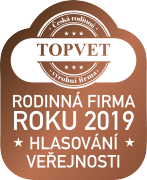Common juniper (Juniperus communis L.)
Common juniper (Juniperus communis L.)
Family: Cypress family (Cupressaceae)
Vernacular and other names
Juniper blueberries, boleraz, pine tree, pine tree, pine tree.
History
Juniperus communis, from the Celtic junepus – bitter, bitter, pungent. Juniper was already known in antiquity. Hippocrates used it to speed up wound healing and internally to hasten childbirth. Hildegard of Bingen used juniper as a diuretic for fever related to lung diseases. In the Middle Ages and up to the 16th century, it was considered a panacea. The first mentions of juniper treatment date back to ancient times. A juniper planted in front of the door to the house was supposed to reliably ward off witches. In the Middle Ages, the Arabs prepared famous jams from juniper, which are still preserved today in older Arab pharmacopoeias. Juniper is said to be associated with the planet Mars. It has a long history of use in natural medicine in Europe and China. Juniper smoke was used as a prevention against the black plague and leprosy. Even during World War II, French nurses burned juniper in hospital rooms. American Indians used juniper for difficult births. However, there are virtually no published clinical studies.
Occurrence
About 60 species of junipers are known. Juniper is native to Eurasia. They grow mainly in the northern hemisphere (in the southern only in the mountains of East Africa). We find them on rocky slopes, pastures, heaths or on the edges of oak and birch forests. It likes sunny habitats that are alternately dry and wet and low in nutrients. It used to be widespread in the Czech Republic from lowlands to mountain locations. At present, it is found scattered to rare.
Description
Evergreen, non-deciduous, slow-growing, dioecious shrub or tree growing on higher, dry and stony slopes. It grows to a height of up to 12 meters (shrubs up to 4 meters). The 6-13 mm large fruits (galbula - popularly known as heifers), which are used in herbalism, ripen once every two years only on female bushes. Fruits contain 2-3 seeds. However, if it is a "bad" year, the juniper will not bear fruit for several years in a row. The needles grow in triple whorls, are 10-15 mm long, have a whitish groove on top and are prickly at the end. It blooms with yellow flowers from April to May. Both male and female cones grow in the hollows of the leaves. The brown bark tends to peel off in thin strips.
Used parts
The part used is Fructus juniperi - a false fruit collected at the end of October (it is usually the last herb that the herbalist collects in the season). Beautifully colored blue-black berries are collected, which are fully ripe mostly in the fall of the second year. After drying, the berries must be shiny, full and wrinkle-free. It is also possible to use young juniper shoots for wraps and baths that reduce rheumatic pain. At the beginning of winter, it is also possible to collect wood, from which we obtain essential oil by distillation, but its effect is weaker. Alternatively, resin can also be used. Juniper harvesting is prohibited in the Czech Republic.
Active substances
The herb contains 0.2-3.4% essential oil (most often 1-2%). Essential oil is mainly composed of monoterpenes pinene (alphapinene), terpineol, camphene, limonene, humulone, juniper camphor, borneol, geraniol, cadinene, sabinene and others. It also contains around 33% sugars (glucose and fructose). Around 10% resin, catechin tannins, flavonoids, juniper, vitamin C, organic acids, etc.
Classification
Antiseptic (acts against infections), disinfectant (suppresses the multiplication of bacteria), diuretic (draining effect), antirheumatic (for rheumatic pains), stimulant of the lymphatic system, etc.
Proven effects
Evidence of efficacy is based on traditional use, scientific theories and basic scientific research. The effects have not yet been conscientiously and sufficiently studied in humans, especially in terms of safety and possible health risks. Serious health risks can (and do) arise from high doses administered internally. It follows from the above that the determination of the dose for internal use is based on scientific research, publications, traditional use or expert opinions. However, this situation applies to most herbs used in natural medicine.
Juniper (specifically 4-terpineol and terpinen-4-ol) accelerates the processing of fluids in the kidneys, and therefore it is added to diuretic teas, for retention of fluids in the body, for inflammatory diseases of the urinary tract. When used internally, it improves digestion, stimulates the appetite and acts against flatulence. It is very effective against joint rheumatism (it improves metabolism in the joints). Externally, it is used for painful joints, edema, arthritis, chronic rheumatism and gout, and spine pain. It helps with muscle pain due to strain. It increases blood circulation in the skin and has a healing effect, which is used to heal various skin diseases. It significantly stimulates the activity of the lymphatic system, and this is used
Recipes
• To strengthen the body and reduce rheumatic pains, prepare a bath from 4 cups of fruits and small shoots boiled for 15 minutes in 2 liters of water. In this way, it is advisable to bathe twice a week for 15-20 minutes.
• An infusion for internal use is prepared from one teaspoon of the fruit in a cup of boiling water. Infuse for 10-20 minutes and serve twice a day for a maximum of 6 weeks.
• Prepare juniper wine from 30 g of fruit and 15 chopped twigs. Pour 1 liter of white wine over this mixture and heat to boiling. After 4 days of maceration, strain and add 30 g of sugar. We drink one pint a day.
• Prepare juniper tea from 2-3 crushed junipers poured with 1 cup of boiling water. After five minutes, strain and drink 1-3 cups a day.
Herbs with similar effects
Cedar.
Note
In the Topvet menu you will find a wide range of products with a high content of juniper essential oil.
In addition to personal experiences, information from articles and publications was used in the article:
- European Medicines Agency Evaluation of Medicines for Human.
- A Study on the In Vitro Antioxidant Activity of Juniper (Juniperus communis L.) Fruit Extracts, Mahfuz Elmasta; Hassan Y. Aboul-Enein, 2006.
- Handbuch der Klosterheilkunde, Dr. G. Mayer, Dr. Med. B. Uehleke, Pater Kilian Saum OSB, 2002
- Le Santé par les plantes, Sélection du Readerś Digest, 2003.
- The komplete book of herbs, Anness Publishing Limited, 1994.
- Guide pratique des remédes naturels, Sélection du Readerś Digest, Paris 1995.
- Natural Standart Bottom Line Monograph, 2009.
- Apteka natury, Jerzy Mostowski, 2000.
- Bylinář, Zdraví, krása a radost, Lesley Bremnessová, 1988.
- The Healing Herbs, Michael Castleman, 1991.
- Aromaterapie od A do Z, Patricia Davisová, 2005.
- Culinary Herbs, NRC Research Press, Ottawa, 1997.
- Agrawal OP., et al. Antifertility effects of fruits of Juniperus communis. Planta Med. 1980; Suppl. 98-101.
- Babkine bylinky, Aurélia Dugasová, Dionýz Dugas, 1995.
- Dumonts kleines Heilmittel Lwxikon, Anne Iburg, 2003.
- Anonymus. Final report on the safety assessment of Juniperus communis extract, Juniperus oxycedrus extract, Juniperus oxycedrus tar, Juniperus phoenica extract and Juniperus virginiana extract. Int. J. Toxicol. 2001; 20 Suppl. 2: 41-56.
- Anonymus. Juniper; Juniperi pseudo-fructus. European Pharmacopoeia 6.0; 01/2008 pp. 2206-2207.
- Anonymus. Juniperi pseudo-fructus – Juniper. ESCOP monographs, 2nd Ed. Thieme Verlag, Stuttgart 2003: pp. 282-285.
- Anonymus. Juniperus communis. Monographie der Kommission E. Banz Nr. 228 vom 05. 12. 1984.
- Banthorpe DV., et al. Monoterpene patterns in Juniperus and Thuja species. Planta Med. 1973; 23(1): 64-69.
- Barnes J., Anderson LA., Phillipson JD. Herbal Medicines, 3rd Ed. Pharmaceutical Press, London 2007: pp. 386-388.
- Duke JA. CRC Handbook of Medicinal Herbs. CRC Press, Inc. Boca Raton, Florida Printing 1988: pp. 256-258.
- Glisic SB., Milojevic SZ., Dimitrijevic SI., Orlovic AM., Skala DU. Antimicrobial activity of the essential oil and different fractions of Juniperus communis L. and comparison with some commercial antibiotics. J. Serb. Chem. Soc. 2007; 72: 311-320.
- Janku I. et al. Diuretic substance from Juniper (Juniperus communis L.). Experientia 1957; 13(6): 255-256.
- Janku I., Háva M., Motl O. Ein diuretisch wirksamer Stoff aus Wacholder (Juniperus communis L.). Experientia 1957; 13: 255-256.
- Martin AM., Queiroz EF., Marston A., Hostettmann K. Labdane diterpenes from Juniperus communis L. berries. Phytochem. Anal. 2006; 17: 32-35.
- Mascolo N., Autore G., Capasso F., Menghini A., Fasulo MP. Biological screening of Italian medicinal plants for anti-inflammatory activity. Phytother. Res. 1987; 1: 28-31.
- Mathias CG., Plant dermatitis-patch test results (1975-1978). Note to Juniperus extracts. Contact Dermatitis 1979; 5(5): 336.
- and more
Image source: wikimedia.org
Author: Dr. Jiří Pantůček and the Topvet collective
© Copyright (2009) MVDr. Jiří Pantůček - all rights reserved. No part of this document may be reproduced or transmitted in any form or by any means, electronic, including copying, recording, or by any information retrieval system, including websites, without written permission.
All information contained in the herbarium has not been evaluated by the control authorities for the control of dietary supplements. All information contained in this plant herbarium is for educational, informative and entertainment purposes. This information should not be used for diagnosis, indication or change of treatment prescribed by a doctor. The plants listed in the herbarium are not substitutes for medicines. In the case of any treatment, it is necessary to consult the use of dietary supplements with your attending physician.















